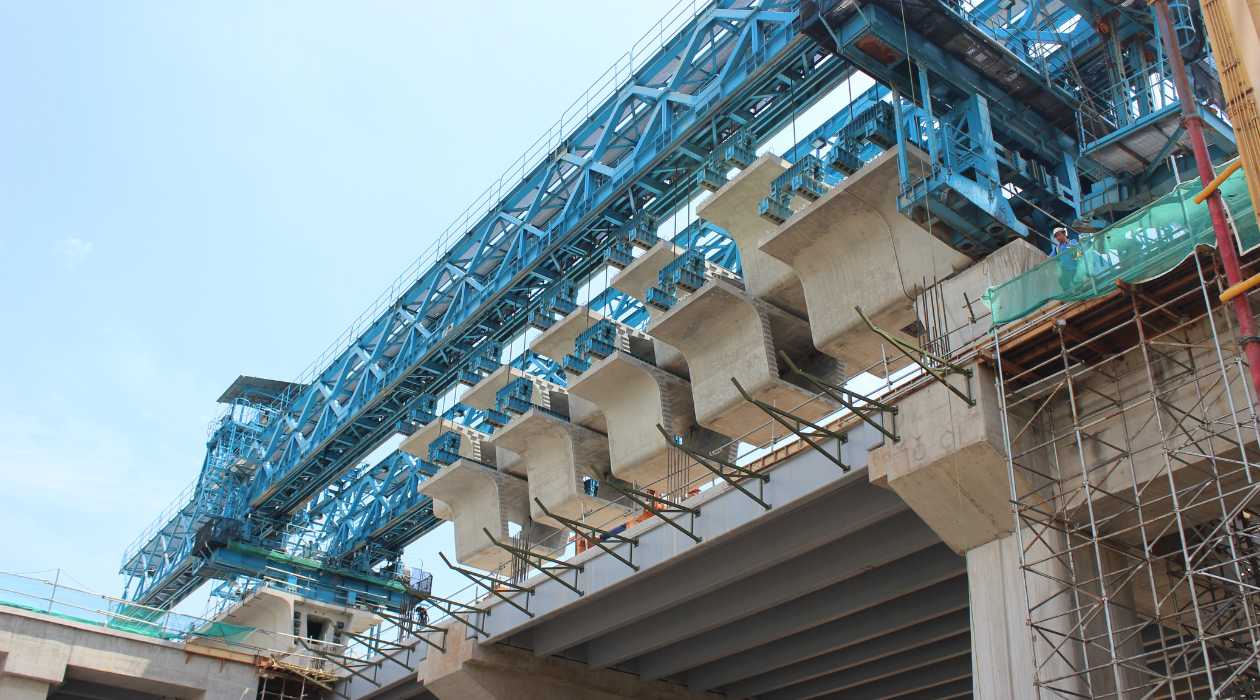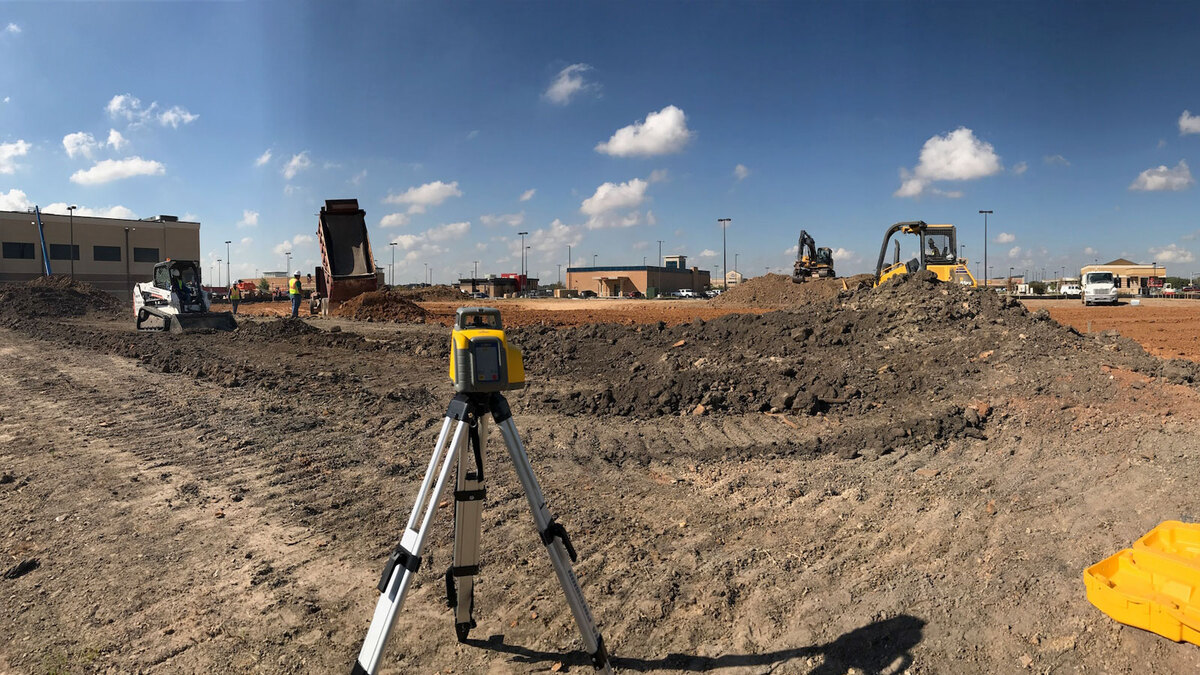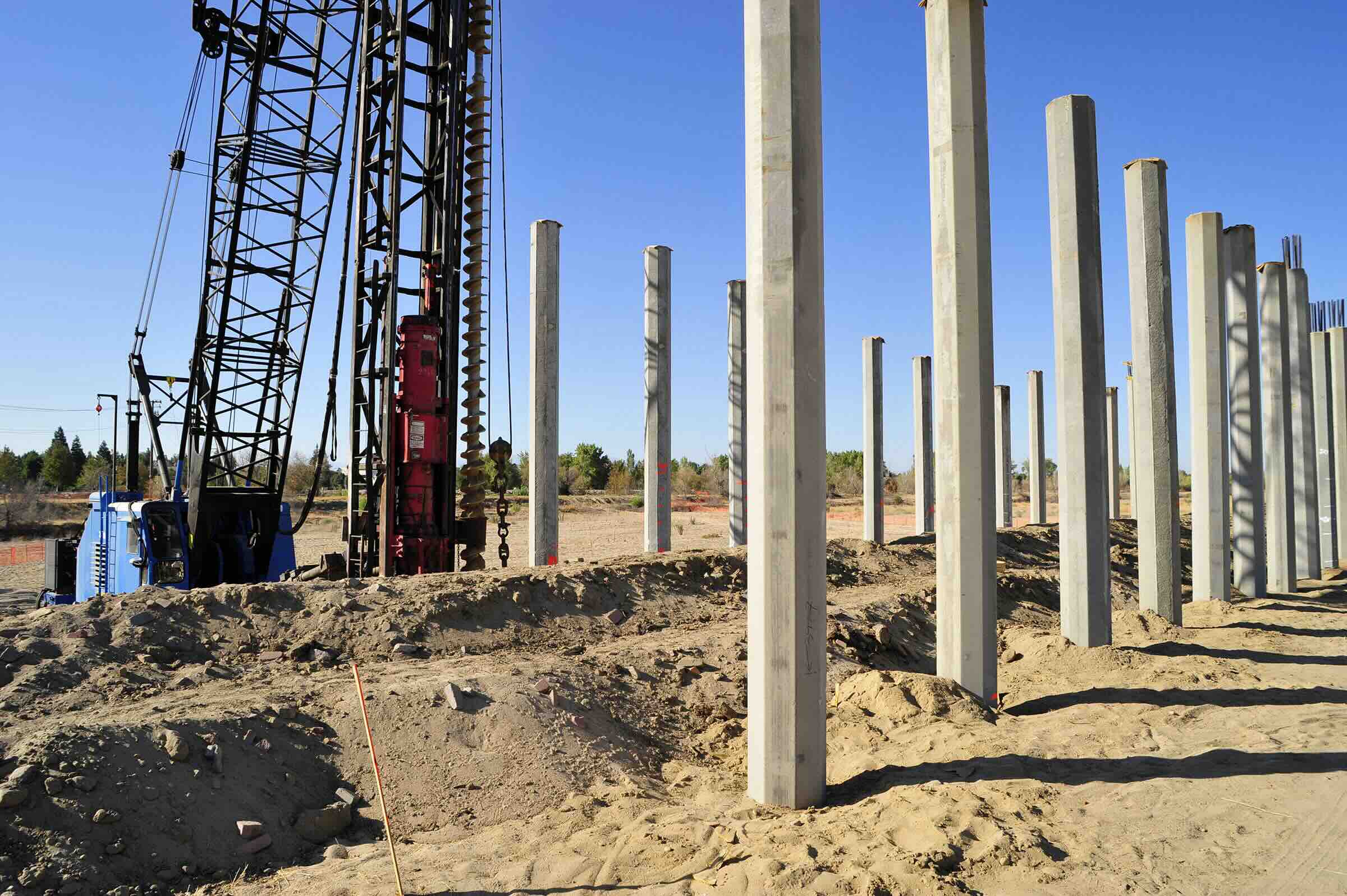Home>diy>Building & Construction>What Is An Addendum In Construction


Building & Construction
What Is An Addendum In Construction
Modified: December 7, 2023
Learn about the concept of an addendum in construction, its importance in building-construction projects, and how it affects project contracts.
(Many of the links in this article redirect to a specific reviewed product. Your purchase of these products through affiliate links helps to generate commission for Storables.com, at no extra cost. Learn more)
Introduction
Welcome to the world of construction, where meticulous planning, precise execution, and thorough documentation are cornerstones of success. In the fast-paced construction industry, changes and modifications to plans and specifications are not uncommon. These changes can arise due to various reasons, such as design updates, unforeseen circumstances, or client requests. In such scenarios, an addendum becomes a critical tool to ensure transparency, clarity, and legal compliance.
An addendum in construction refers to a document that is added to an existing contract or construction project to modify or clarify certain aspects of the original contract. It serves as a means of communicating changes or additional information to all parties involved, including the architect, contractor, subcontractors, suppliers, and clients.
With its legal significance, an addendum provides a formal framework to address modifications, add-ons, or clarifications to the project scope, specifications, plans, or any other contractual provisions. It is vital to understand the purpose, types, and process of creating an addendum in construction to effectively manage construction projects and ensure compliance with contractual obligations.
In this article, we will explore the definition and purpose of an addendum, discuss its legal significance, delve into the types of addenda commonly used in construction, examine the process of adding an addendum, highlight considerations for their use, and provide examples to illustrate their practical application in construction projects.
Key Takeaways:
- Addenda in construction serve as formal amendments to original contracts, ensuring transparency, legal compliance, and clear communication of changes, modifications, and additions to construction projects.
- Understanding the purpose, types, and process of adding an addendum is crucial for effective project management, legal significance, and successful adaptation to evolving project requirements in the construction industry.
Read more: What Is Pre-Construction In Construction
Definition of an Addendum
An addendum, in the context of construction, is a document that is added to an existing contract or construction project to modify or supplement its terms and conditions. It serves as an official amendment to the original contract and is used to address changes or additions to the project scope, specifications, plans, or any other contractual provisions.
Think of an addendum as an extension of the original contract. It provides a means to incorporate new information or revise existing information without voiding the entire contract. This allows the parties involved to adapt to evolving circumstances or meet specific project requirements.
An addendum typically contains specific details about the changes or additions being made to the contract. It may include revised drawings, updated specifications, revised timelines, additional work items, or any other relevant information that needs to be communicated to the project stakeholders.
It is important to note that an addendum should be executed with the same level of formality as the original contract. This means that it should be in writing, signed by all parties involved, and legally binding. This helps to ensure that all parties are in agreement to the changes or additions being made and minimizes the potential for misunderstandings or disputes down the line.
Furthermore, an addendum should clearly reference the original contract it is amending and provide a detailed explanation of the changes or additions being made. It should also include any necessary supporting documents or references to aid in the understanding and implementation of the modifications.
Overall, an addendum serves as a tool to maintain the integrity of the original contract while accommodating changes or additions that arise during the course of a construction project. It helps to ensure that all project stakeholders are on the same page and provides a formal mechanism for managing and documenting changes to the project scope and specifications.
Purpose of an Addendum in Construction
The primary purpose of an addendum in construction is to address changes, modifications, or additions to the original contract or construction project. It serves as a mechanism to ensure that all parties involved are aware of and agree to these changes, helping to maintain clarity, transparency, and legal compliance throughout the project.
One of the key purposes of an addendum is to keep the original contract intact while incorporating necessary adjustments or additions. This helps to avoid completely rewriting the contract or starting from scratch, saving time, effort, and resources. Instead, the addendum allows for specific changes to be made to the original documents, ensuring that all parties are aware of and agree to the modifications.
An addendum also provides a formal record of changes and additions to the contract, reducing the risk of misunderstandings or disputes in the future. By documenting the modifications in writing and obtaining signatures from all parties involved, the addendum serves as evidence of the agreed-upon changes and can be referenced if any conflicts or questions arise later on.
Furthermore, an addendum helps to maintain project transparency and communication between the various stakeholders. It ensures that all parties are aware of any modifications that have been made and provides them with updated information to proceed with their respective roles and responsibilities. This can include revisions to project specifications, adjusted timelines, revised budgets, or any other changes that impact the project’s execution.
From a legal standpoint, an addendum is significant as it formalizes any changes made to the original contract. It ensures that the modifications are legally binding and enforceable, protecting the rights and obligations of all parties involved. This is particularly important in construction, where contracts are complex and involve various parties, each with their own rights and responsibilities.
Overall, the purpose of an addendum in construction is to facilitate flexibility and adaptability within the contractual framework of a construction project. It allows for changes and additions to be made while maintaining the integrity of the original contract and ensuring that all parties involved are informed and in agreement. By doing so, it helps to minimize disputes, enhance project management, and promote successful project completion.
Legal Significance of an Addendum
The legal significance of an addendum in construction cannot be overstated. It serves as a formal amendment to the original contract, providing a legally binding framework for modifications, changes, or additions made during the course of a construction project. Understanding the legal implications of an addendum is crucial to ensure compliance, protect the rights of the parties involved, and mitigate potential disputes.
One of the key legal aspects of an addendum is that it requires the same level of formality as the original contract. This means that it should be in writing and signed by all parties involved to indicate their agreement to the modifications. By adhering to this formality, an addendum becomes a legally binding document that can be enforceable in a court of law.
Additionally, an addendum must clearly reference the original contract it is amending. This ensures that the modifications are tied to the existing contractual agreement and that the changes do not alter the overall intent and obligations of the original contract. By linking the addendum to the original contract, any disputes or discrepancies can be resolved by referring back to the original terms and conditions.
The legal significance of an addendum lies in its ability to provide clarity and transparency regarding the modifications made to the original contract. It helps to avoid misunderstandings or conflicting interpretations by clearly stating the changes being made and the impact of those changes on the project’s scope, timeline, cost, or other contractual provisions.
An addendum also offers protection to the parties involved in a construction project. It ensures that any changes made to the contract are agreed upon by all parties, providing a legal basis for enforcing those changes. This protects the rights and obligations of the parties and prevents one party from unilaterally making modifications without proper consent.
In the event of a dispute or disagreement regarding the modifications made, the addendum serves as evidence of the agreed-upon changes. It can be presented in court or arbitration proceedings to demonstrate the intentions of the parties involved and support their respective claims. This legal documentation strengthens the overall credibility and enforceability of the contractual arrangements.
Therefore, it is essential to treat an addendum with the same level of importance and attention as the original contract. By ensuring proper execution, clear communication, and adherence to legal requirements, an addendum becomes a vital tool in construction projects, safeguarding the interests of all parties involved and providing a solid legal foundation for any modifications or additions made along the way.
Types of Addenda in Construction
There are several types of addenda commonly used in the construction industry. These addenda serve specific purposes and address different aspects of the project. Understanding the different types of addenda can help construction professionals effectively manage changes, modifications, and additions that may arise during a construction project.
1. Design Addenda: Design addenda are often used when there is a need to modify or revise the project’s design. These addenda may include updated drawings, revised specifications, or additional design details that provide clarification or make changes to the original design documents. Design addenda ensure that all stakeholders have the most up-to-date design information.
2. Scope Addenda: Scope addenda are used when there is a need to modify or expand the project’s scope of work. This can include additional work items, revised project boundaries, or changes to the project’s deliverables. By issuing a scope addendum, all parties involved are informed of the changes and can adjust their plans and responsibilities accordingly.
3. Material Addenda: Material addenda are utilized when there is a need to modify or substitute the materials specified in the original contract. This may be due to availability issues, cost considerations, or changes in project requirements. Material addenda ensure that all parties are aware of the approved substitutions and can make the necessary adjustments to procure and use the specified materials.
4. Time Addenda: Time addenda are used when there is a need to modify the project’s timeline or schedule. This can include extending or compressing project deadlines, revising milestones, or adjusting the overall project duration. Time addenda ensure that all parties are informed of any changes in the project’s timeline and can plan their activities accordingly.
5. Contractual Addenda: Contractual addenda are used to modify or clarify specific contractual provisions in the original contract. This can include changes to payment terms, insurance requirements, dispute resolution mechanisms, or any other contractual obligations. Contractual addenda ensure that all parties have a clear understanding of their rights and responsibilities under the modified contract terms.
6. Regulatory Addenda: Regulatory addenda are used when there is a need to comply with new or updated regulations, codes, or standards. These addenda ensure that the project meets the necessary legal requirements and adheres to any changes in regulatory guidelines that may affect the construction process or project deliverables.
It is important to note that these types of addenda are not mutually exclusive, and multiple addenda can be issued for a single project to address different aspects of the modifications or additions being made. The specific types of addenda used in a construction project will depend on the nature of the changes, the project’s requirements, and the contractual obligations of the parties involved.
By understanding the various types of addenda in construction, construction professionals can effectively communicate changes, modifications, and additions to all project stakeholders, ensuring that everyone is on the same page and can adapt their plans and responsibilities accordingly.
When creating an addendum in construction, be sure to clearly outline the changes or additions to the original contract, including any new materials, costs, or timelines. This will help avoid misunderstandings and disputes down the line.
Read more: What Is Construction
Process of Adding an Addendum
Adding an addendum to a construction project requires a systematic process to ensure that all parties involved are aware of and agree to the modifications being made. While the specific steps may vary depending on the project and contractual requirements, the following outlines a general process for adding an addendum in construction:
- Identify the need for an addendum: The first step is to identify the need for an addendum. This could be prompted by changes in project requirements, design updates, unforeseen circumstances, or client requests. It is important to thoroughly evaluate the need for the addendum and consider its potential impact on the project’s scope, timeline, budget, and other contractual provisions.
- Determine the scope of the addendum: Once the need for an addendum is established, define the specific changes, modifications, or additions that will be addressed. Determine which aspects of the project will be affected and clearly outline the intended revisions or clarifications.
- Prepare the addendum documentation: Prepare the necessary documentation for the addendum. This includes drafting the actual addendum document, which should clearly reference the original contract, outline the changes being made, and provide any supporting documents, such as revised drawings or specifications. Ensure that the addendum is comprehensive, specific, and legally compliant.
- Seek legal review and approval: It is advisable to seek legal review and approval of the addendum before moving forward. This helps ensure that the changes are legally sound and comply with the terms and conditions of the original contract. Legal review can also help identify any potential conflicts or issues that need to be addressed before finalizing the addendum.
- Obtain signatures from all parties: Once the addendum is finalized and approved, obtain signatures from all parties involved. This includes the project owner, the contractor, subcontractors, suppliers, and any other relevant stakeholders. The signatures indicate that all parties are aware of and agree to the modifications outlined in the addendum.
- Distribute and implement the addendum: Distribute copies of the signed addendum to all project stakeholders. Communicate the changes effectively and ensure that everyone is aware of the modified terms and conditions. Update project documentation, such as drawings, specifications, and schedules, as necessary, to reflect the changes outlined in the addendum. Incorporate the addendum into the project management systems to ensure proper tracking and implementation.
- Maintain records and documentation: Keep a record of all addenda issued throughout the project. Maintain copies of the signed addenda, supporting documents, and any related correspondence. This documentation serves as evidence of the agreed-upon modifications and can be referenced in the future if any disputes or questions arise.
Following a clear and structured process when adding an addendum in construction helps maintain transparency, ensure legal compliance, and facilitate effective communication among all project stakeholders. It also helps to minimize misunderstandings and disputes by providing a formal framework for addressing modifications or additions to the original contract.
Considerations for Using an Addendum in Construction Projects
When using an addendum in construction projects, there are several important considerations to keep in mind. These considerations help ensure that the addendum is effectively utilized, that all parties are on the same page, and that the modifications or additions being made are legally compliant and aligned with project requirements. Here are some key considerations:
- Clear communication: Effective communication is crucial when implementing an addendum. Ensure that all project stakeholders are informed of the changes being made and understand the impact on their respective roles and responsibilities. This includes the project owner, the contractor, subcontractors, suppliers, and any other relevant parties.
- Legal review: Seek legal review and approval for the addendum before finalizing it. This ensures that the changes comply with the original contract and are legally enforceable. Legal review helps identify any potential conflicts, ambiguities, or risks associated with the modifications and provides an opportunity to address them upfront.
- Comprehensive documentation: The addendum should be comprehensive and specific, clearly outlining the modifications or additions being made. It should reference the original contract, provide detailed explanations of the changes, and include any necessary supporting documents, such as revised drawings or specifications. Thorough documentation helps prevent misunderstandings and ensures that all parties have a clear understanding of the modifications.
- Consent from all parties: It is essential to obtain consent from all parties involved in the original contract before implementing the addendum. This includes the project owner, the contractor, subcontractors, and suppliers. Consent should be obtained in writing, with signatures from all parties indicating their agreement to the modifications outlined in the addendum.
- Timing and sequencing: Consider the timing and sequencing of the addendum in relation to the project’s progress. Implementing an addendum too late in the project may cause disruptions and delays. It’s important to evaluate the impact of the modifications on the project timeline and ensure that they can be effectively integrated into the construction process.
- Contractual obligations: Ensure that the modifications or additions made through the addendum align with the contractual obligations of all parties involved. Consider the impact on payment terms, work schedules, insurance requirements, and any other contractual provisions. The addendum should not contradict or override the original contract, but rather provide clarification or updates within its framework.
- Tracking and documentation management: Establish a system for tracking and managing all addenda issued throughout the project. This includes keeping records of all signed addenda, supporting documents, related correspondence, and any revisions made to project documentation, such as drawings or specifications. Maintaining an organized and up-to-date documentation system helps facilitate transparency, accountability, and efficient project management.
Considering these factors when using an addendum in construction projects helps ensure that the modifications or additions are properly executed and aligned with the project’s goals and contractual obligations. It promotes effective communication, minimizes disputes, and allows for adaptability in response to changing project requirements or unforeseen circumstances.
Examples of Addenda in Construction
Addenda in construction projects come in various forms and address different aspects of the project. Here are a few examples of addenda commonly used in construction:
- Design Addendum: A design addendum may be issued to incorporate changes or revisions to the project’s design. This could include updated drawings, revised specifications, or additional design details that provide clarity or address design modifications requested by the client or required for compliance with building regulations.
- Scope Addendum: A scope addendum could be used when there is a need to modify or expand the project’s scope of work. This might involve adding additional work items, adjusting project boundaries, or incorporating new deliverables as requested by the project owner or due to unforeseen circumstances that necessitate changes to the project’s scope.
- Material Substitution Addendum: A material substitution addendum may be issued when there is a need to replace specified materials with suitable alternatives. This could arise due to availability issues, changes in market conditions, or cost considerations. The addendum clarifies the approved substitutions and ensures that the project can proceed without compromising quality or performance.
- Time Extension Addendum: A time extension addendum may be utilized when there are delays or disruptions that require an adjustment to the project’s timeline. This could be due to unforeseen site conditions, weather events, or other factors beyond the contractor’s control. The addendum extends the project’s timeline to account for the additional time required to complete the work.
- Change Order Addendum: A change order addendum may be issued when there is a need to make changes or modifications to the original contract terms and conditions. This could include adjusting the contract price, revising the project completion date, or modifying the project requirements. The change order addendum documents the agreed-upon changes and ensures that all parties are aware of and consent to the modifications.
- Contractual Amendment Addendum: A contractual amendment addendum is used to modify specific contractual provisions in the original contract. This could involve updating payment terms, adjusting insurance requirements, or altering dispute resolution mechanisms. The addendum amends the original contract to reflect the agreed-upon changes to these contractual provisions.
These examples illustrate the different types of addenda commonly used in construction projects. However, it’s important to note that the specific addenda required will depend on the unique circumstances, project requirements, and contractual agreements of each construction project.
By utilizing various addenda as needed, construction professionals can effectively manage changes, modifications, and additions that arise throughout the course of a project, ensuring clarity, transparency, and compliance with contractual obligations.
Conclusion
Addenda play a crucial role in the construction industry by providing a formal framework to address changes, modifications, and additions to construction projects. These documents serve as amendments to the original contract, ensuring transparency, clarity, and legal compliance throughout the project’s lifecycle.
Understanding the purpose, types, and process of adding an addendum is vital for effective project management and successful project completion. By utilizing addenda appropriately, construction professionals can navigate modifications and additions without compromising the integrity of the original contract or causing confusion among project stakeholders.
An addendum serves as a legally binding document that documents agreed-upon changes and protects the rights and obligations of all parties involved. It is essential to adhere to the strict formality and meticulousness when drafting, reviewing, and executing addenda to ensure their legal significance and enforceability.
From design revisions and scope modifications to material substitutions and time extensions, addenda can address a variety of changes that might arise during construction projects. By utilizing different types of addenda, project professionals can effectively communicate and manage modifications while minimizing disputes and ensuring project success.
In conclusion, proper utilization of addenda in construction projects is essential for maintaining project transparency, compliance, and effective communication among stakeholders. By following a systematic process and considering important factors such as clear communication, legal review, and comprehensive documentation, addenda serve as invaluable tools for adapting to changing project requirements and facilitating successful project outcomes.
By recognizing the significance of addenda and incorporating them into construction project management practices, professionals can navigate changes and modifications with clarity, collaboration, and efficiency, ultimately enhancing the overall construction process and achieving project success.
Frequently Asked Questions about What Is An Addendum In Construction
Was this page helpful?
At Storables.com, we guarantee accurate and reliable information. Our content, validated by Expert Board Contributors, is crafted following stringent Editorial Policies. We're committed to providing you with well-researched, expert-backed insights for all your informational needs.















0 thoughts on “What Is An Addendum In Construction”